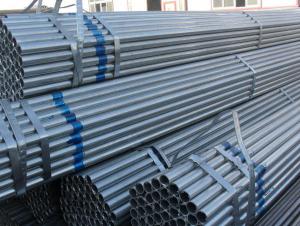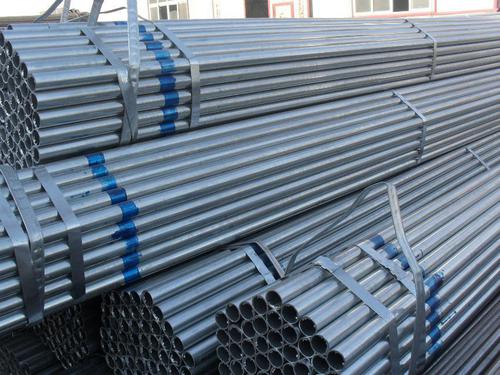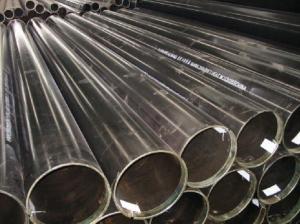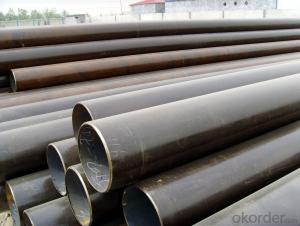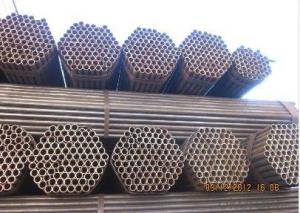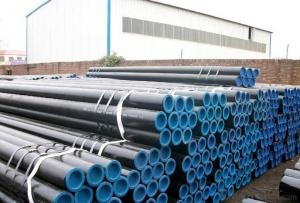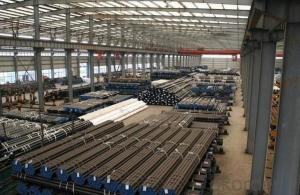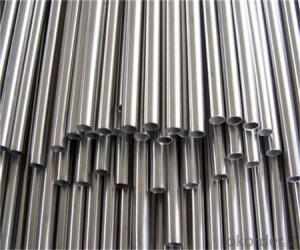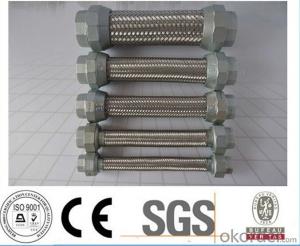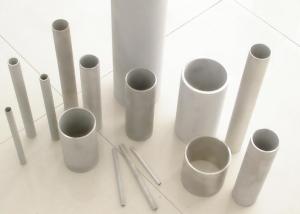Galvanized Seamless Pipe Stock
- Loading Port:
- Tianjin
- Payment Terms:
- TT OR LC
- Min Order Qty:
- -
- Supply Capability:
- 20000ton m.t./month
OKorder Service Pledge
OKorder Financial Service
You Might Also Like
Galvanized Seamless Pipe Stock
| 1.COMMODITY NAME | ASTM A53GR B Carbon Seamless Steel Pipe |
| 2.STANDARD | ASTM A106,ASTM A53,API 5L,ASTM A179 BS1387 GB/T8162-2008,GB/T8163-2008 A335 |
| 3.MATERIAL | GR.B,10#,20#,45#,16Mn,ST42-ST52 |
| 4.OUTER DIAMETER | 13.7-610MM |
| 5.WALL THICKNESS | 2.34-30MM |
| 6.LENGTH | 5.8-11.8M |
| 7.DELIVERY TIME | 20-30 DAYS AFTER SIGNING THE CONTRACT OR AS CUSTOMER' DEMAND |
| 8.BOTH OF ENDS | PLAIN ENDS OR BEVELED ENDS,PROTECTING CAPS |
| 9.PAKCING | IN BUNDLES TIED WITH STEEL STRIPS |
| 10.APPLICATION | A.CARRYING GAS,WATER OR OIL IN THE INDUSTRIES OF PETROLEUM AND NATURAL GAS B.FOR REFINERY,HEAT-EXCHANGING PIPE OR PIPELINE C.FOR HIGH-PRESSURE BOILER D.BUILDING-SHIP AND OVER-HEATE |
| 11.THE THIRD PARTY INSPECTION | SGS, BV OR AS CUSTOMER'S DEMAND |
| 12.PROCESS TECHLONOGY | COLD-DRAWN,HOT-EXPANDED,HOT-ROLLED |
| 13.CERTIFICATE | API 5L,API 5CT,ISO |
We have a batch of galvanized seamless pipe stock,if you need short dilivery time and good quality steel pipe,welcome contact with us .
Detail information as below:The galvanized seamless pipe standard is ASTM A53.
| Description | size(inch) | QTY | UNIT | OD(MM) | WT(MM) | STANDARD | MIN Galvanized Wall thickness | LENGTH(M/PC) |
| PIPE, SMLS, BE, CS ASTM A53 GR.B GALV. ASME-B36.10M, | 3" STD | 60.0 | M | 88.9 | 5.49 | ASTM A53 | 90 um | 6M/PC |
| PIPE, SMLS, BE, CS ASTM A53 GR.B GALV. ASME-B36.10M, | 4" STD | 660.0 | M | 114.3 | 6.02 | ASTM A53 | 90 um | 6M/PC |
| PIPE, SMLS, BE, CS ASTM A53 GR.B GALV. ASME-B36.10M, | 6" STD | 468.0 | M | 168.3 | 7.11 | ASTM A53 | 90 um | 6M/PC |
| PIPE, SMLS, BE, CS ASTM A53 GR.B GALV. ASME-B36.10M, | 8" STD | 132.0 | M | 219 | 8.18 | ASTM A53 | 90 um | 6M/PC |
| PIPE, SMLS, BE, CS ASTM A53 GR.B GALV. ASME-B36.10M, | 10" STD | 264.0 | M | 273 | 9.27 | ASTM A53 | 90 um | 12M/PC |
| PIPE, SMLS, BE, CS ASTM A53 GR.B GALV. ASME-B36.10M, | 12" STD | 1332.0 | M | 323.8 | 9.53 | ASTM A53 | 90 um | 12M/PC |
| PIPE, SMLS, MNPT, CS ASTM A53 GR.B GALV., ASME-B36.10M | 2" XS | 6.0 | M | 60.3 | 5.54 | ASTM A53 | 90 um | 6M/PC |
| PIPE, SMLS, MNPT, CS ASTM A53 GR.B GALV. ASME-B36.10M, | 3/4" XS | 6.0 | M | 26.7 | 3.91 | ASTM A53 | 90 um | 6M/PC |
| PIPE, SMLS, MNPT, CS ASTM A53 GR.B GALV. ASME-B36.10M, | 1" XS | 18.0 | M | 33.4 | 4.55 | ASTM A53 | 90 um | 6M/PC |
| PIPE, SMLS, MNPT, CS ASTM A53 GR.B GALV. ASME-B36.10M, | 1-1/2" XS | 6.0 | M | 48.3 | 5.08 | ASTM A53 | 90 um | 6M/PC |
| PIPE, SMLS, MNPT, CS ASTM A53 GR.B GALV. ASME-B36.10M, | 2" XS | 6.0 | M | 60.3 | 5.54 | ASTM A53 | 90 um | 6M/PC |
Note:
1.Packing:BEVEL END WITH PLASTIC CAP,BUNDLING.
2.DeliveryTime:Delivery seamless pipe to tianjin seaport Within 3days after get the deposit.
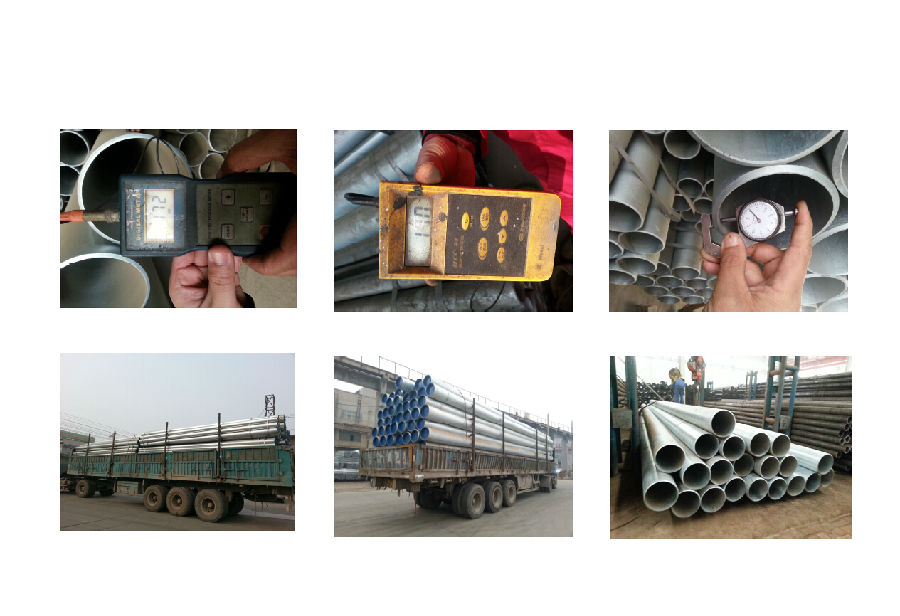
- Q: How are steel pipes used in tunnel construction?
- Steel pipes are used in tunnel construction as structural elements to provide support and stability to the tunnels. They are commonly used in tunnel lining systems to create a strong and durable structure that can withstand the pressure and weight of the surrounding soil or rock. Steel pipes are also used for ventilation systems, drainage systems, and for carrying utilities such as water, gas, or electricity through the tunnel.
- Q: How are steel pipes coated to prevent corrosion?
- Steel pipes are coated to prevent corrosion using various methods and materials. One common method is applying a protective layer of paint or epoxy on the surface of the pipe. This coating acts as a barrier between the steel and the external environment, preventing moisture and corrosive substances from coming into direct contact with the metal. Another technique involves using a process called galvanization, where the steel pipes are coated with a layer of zinc. Zinc is highly resistant to corrosion and acts as a sacrificial anode, meaning it will corrode in place of the steel if any damage occurs to the coating. This sacrificial protection ensures that the steel remains intact and corrosion-free. Additionally, steel pipes can be coated with polyethylene or polypropylene materials through a process called fusion bonding. In this method, the plastic material is melted onto the steel surface, creating a strong bond that provides excellent resistance against corrosion. This type of coating is commonly used in offshore and underground pipelines. Furthermore, another technique for preventing corrosion is the application of a layer of corrosion-resistant alloy onto the steel pipe. This alloy is typically a combination of metals such as nickel, chromium, and molybdenum, which provide superior protection against corrosion in harsh environments. Overall, the choice of coating method depends on various factors such as the operating conditions, the type of corrosive substances present, and the expected lifespan of the steel pipes. By effectively applying these coatings, steel pipes can be safeguarded against corrosion, extending their durability and ensuring the integrity of the infrastructure they are used in.
- Q: What are the common applications of galvanized steel pipes?
- Galvanized steel pipes are commonly used in various industries and applications such as plumbing, water supply systems, gas pipelines, electrical conduits, construction projects, fencing, and outdoor structures. The galvanization process adds a protective zinc coating to the steel, making it resistant to corrosion and extending its lifespan, making it ideal for applications requiring durability and longevity.
- Q: How are steel pipes used in the construction of pipelines?
- Steel pipes are commonly used in the construction of pipelines due to their strength, durability, and resistance to corrosion. They are typically laid down and welded together to form a continuous pipeline that can transport various fluids, such as oil, gas, or water, over long distances. The steel pipes provide a reliable and efficient means of distribution, ensuring the safe and efficient transfer of resources in the construction industry.
- Q: How are steel pipes used in the pulp and paper industry?
- Steel pipes are widely used in the pulp and paper industry for various applications. They are primarily used for conveying corrosive chemicals, hot water, steam, and other fluids throughout the production process. Steel pipes provide high strength, durability, and resistance to corrosion, which is crucial in an industry where harsh chemicals are involved. They are used in the transportation of pulp, bleaching agents, and various liquids within the production facilities, ensuring efficient and reliable operations in the pulp and paper industry.
- Q: What type of steel pipe for security windows?
- Stainless steel security window generally use 25 square tubes and 19 round tubes! 25/38 tubes and 22 round tubes are also available!
- Q: Can steel pipes be used for oil well casing?
- Yes, steel pipes can be used for oil well casing. Steel pipes are commonly used for oil well casing due to their strength, durability, and ability to withstand high pressure and extreme environmental conditions.
- Q: Are steel pipes resistant to impact?
- Yes, steel pipes are generally resistant to impact due to their strong and durable nature. They can withstand heavy loads and external forces, making them suitable for applications that involve high-pressure environments or potential impact scenarios.
- Q: What are the different standards for steel pipes?
- There are several different standards for steel pipes that are used to ensure quality and compatibility in various applications. Some of the most commonly used standards include: 1. ASTM (American Society for Testing and Materials): ASTM standards are widely used in the United States and provide specifications for various types of steel pipes, including seamless and welded pipes. These standards cover dimensions, mechanical properties, and general requirements for steel pipes. 2. API (American Petroleum Institute): API standards are specifically designed for oil and gas industry applications. These standards provide guidelines for the manufacturing, testing, and inspection of steel pipes used in the oil and gas exploration, production, and transportation sectors. 3. DIN (Deutsches Institut für Normung): DIN standards are widely used in Europe and provide specifications for various steel pipe types, including seamless, welded, and cast iron pipes. These standards cover dimensions, materials, and technical delivery conditions for steel pipes used in various industries. 4. BS (British Standards): BS standards are widely used in the United Kingdom and cover specifications for steel pipes used in construction, engineering, and other applications. These standards provide guidelines for dimensions, materials, and manufacturing processes for steel pipes. 5. JIS (Japanese Industrial Standards): JIS standards are widely used in Japan and cover specifications for various steel pipe types, including seamless, welded, and cast iron pipes. These standards provide guidelines for dimensions, materials, and technical delivery conditions for steel pipes used in various industries. 6. ISO (International Organization for Standardization): ISO standards are recognized globally and provide specifications for steel pipes used in various industries. These standards cover dimensions, materials, testing, and quality control requirements for steel pipes. It is important to note that different industries and applications may have specific requirements, and therefore, it is essential to refer to the relevant standard for each specific use case. Adhering to these standards ensures the safety, reliability, and compatibility of steel pipes in their respective applications.
- Q: How are steel pipes used in the mining industry?
- Steel pipes are widely used in the mining industry for various purposes such as transporting water, slurry, and other fluids, as well as for ventilation and structural support in underground mines. Their durability, resistance to corrosion, and high pressure capacity make them ideal for these applications.
Send your message to us
Galvanized Seamless Pipe Stock
- Loading Port:
- Tianjin
- Payment Terms:
- TT OR LC
- Min Order Qty:
- -
- Supply Capability:
- 20000ton m.t./month
OKorder Service Pledge
OKorder Financial Service
Similar products
Hot products
Hot Searches
Related keywords
